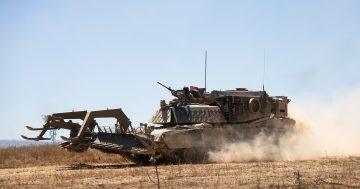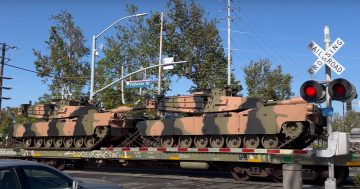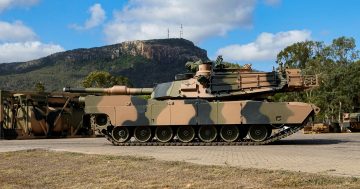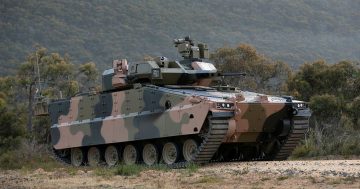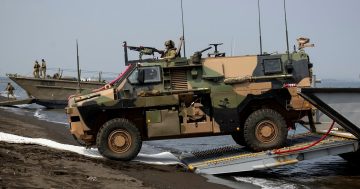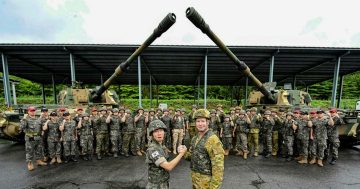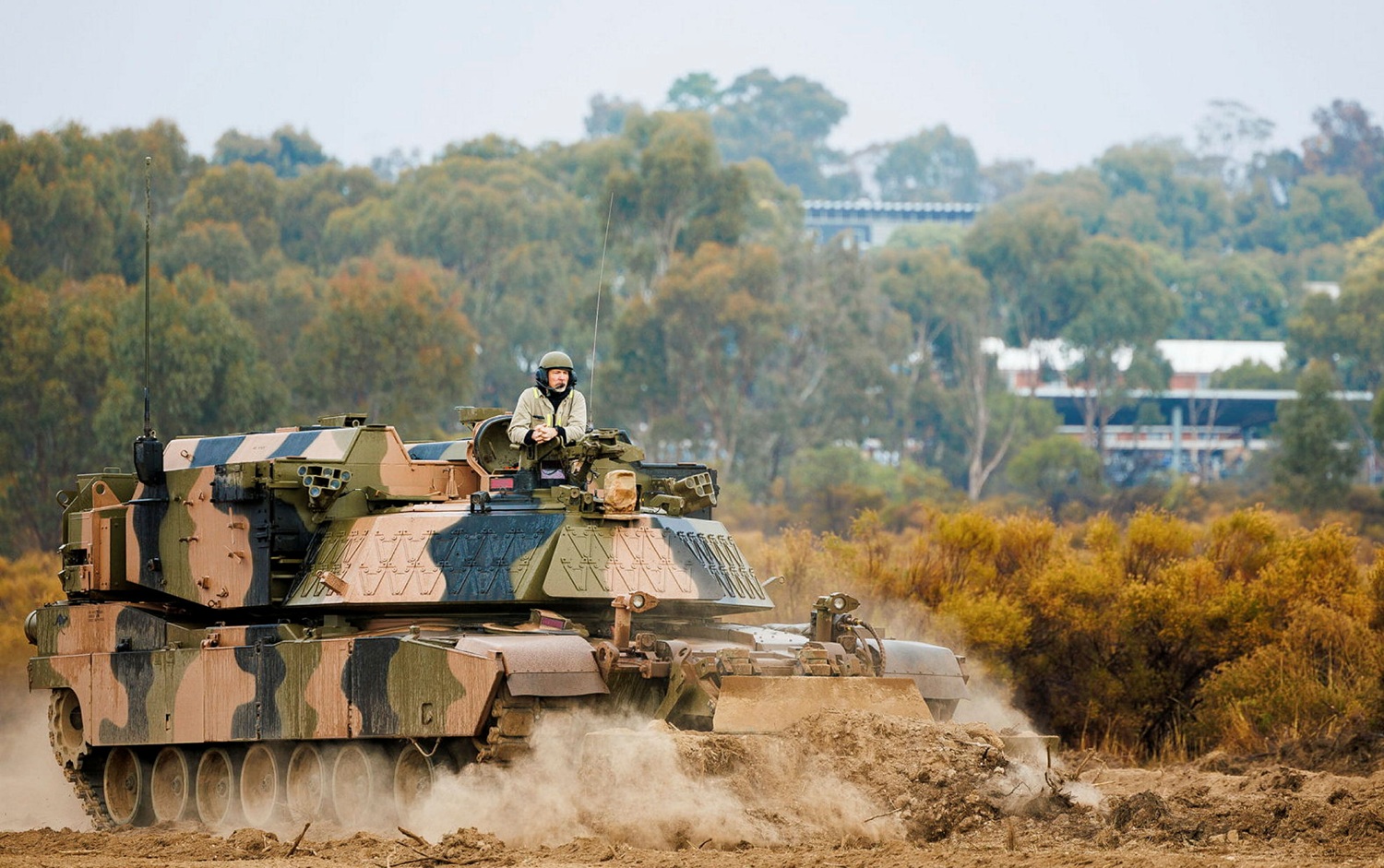
The M1150 ABV is based on the M1A2 MBT chassis, and uses a plough to clear obstacles and mines. Photo: ADF.
Australian Army combat engineers, or ‘sappers’ have commenced training on a range of new vehicles designed to protect soldiers and equipment in combat.
The new combat engineering vehicles (CEV) are being procured under Project LAND 907, and comprise 29 M1150 Assault Breacher Vehicles and 17 M1110 Joint Assault Bridges.
Both CEVs run on the same chassis and drivetrain as the Army’s new M1A2 Abrams Main Battle Tank, offering significant spares, sustainment and training efficiencies across Army’s vehicle fleet.
The Assault Breacher Vehicle (ABV) is equipped with a rocket-propelled explosive that can detonate hidden explosives such as mines and IEDs, creating a safe path for soldiers and vehicles. It also features a large armoured mine plough and dozer blades to clear obstacles and mines.
The Joint Assault Bridges (JAB) can deploy an 18.3-metre folding hydraulic bridge in under three minutes which is capable of supporting the weight of all Australian military vehicles, including the 70 tonne M1A2.
The first cohort of sappers have been training on the new CEVs at the Army’s School of Armour at Puckapunyal near Seymour in central Victoria. The three-month course will teach them to operate the vehicles, navigate terrain, clear obstacles, and provide essential support to armoured units in combat scenarios.
Once the training is complete, the majority of the CEVs will be based at Townsville and operated by the Army’s 3rd Combat Engineer Regiment (3CER) of the 3rd Brigade.
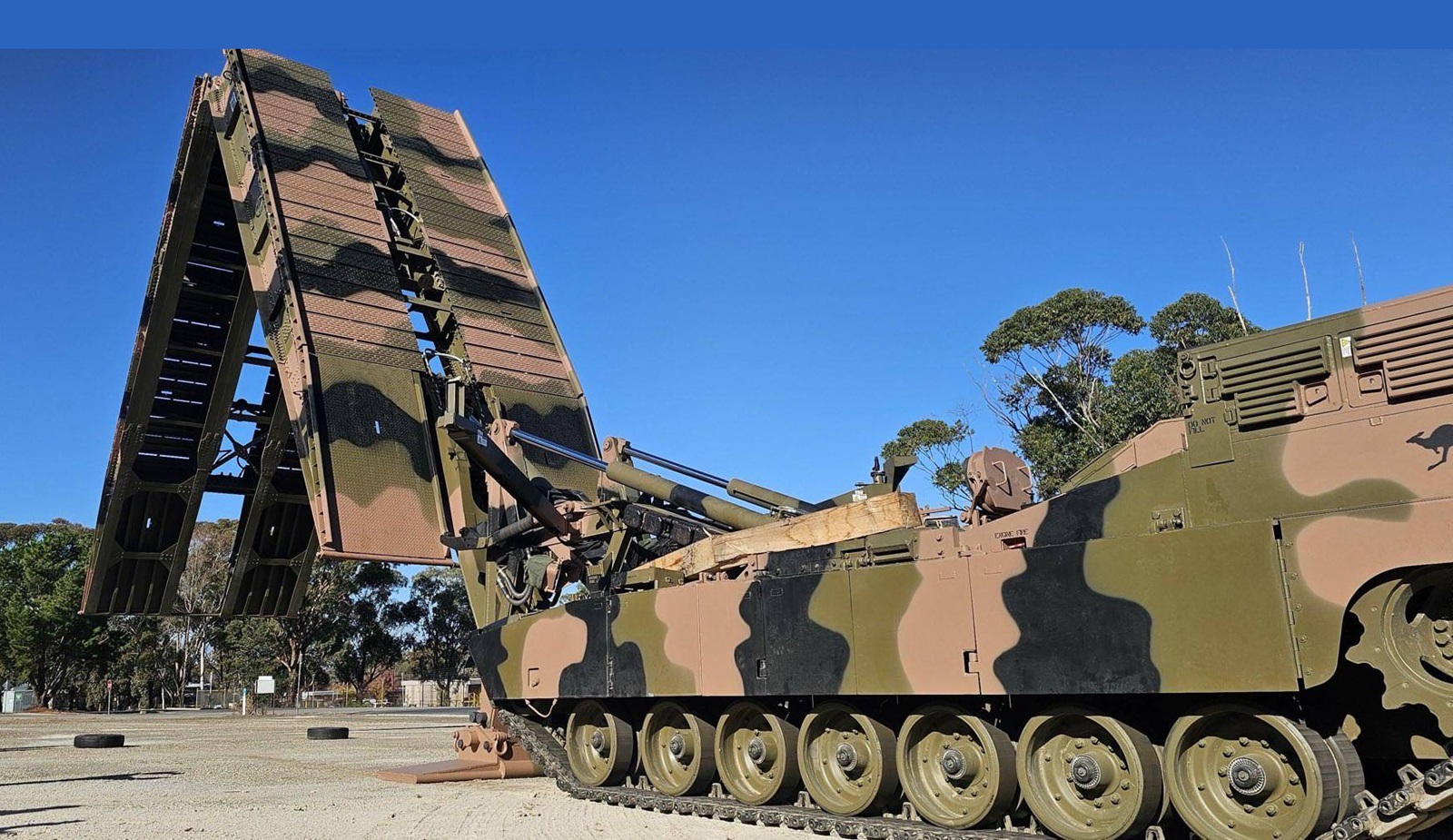
The M1110 JAB can span an 18m gap and support the weight of every vehicle in the ADF. Photo: ADF.
The Army’s Head of Land Capability Major General Richard Vagg said the CEVs would provide soldiers with enhanced protection and mobility.
“The integration of these combat engineering vehicles into our combined arms fighting system significantly reduces the need for our soldiers to conduct high-risk operations on foot, such as clearing mines or obstacles,” he said.
“These advanced capabilities enhance our soldiers’ lethality and survivability, and help ensure their safety and mission success.”
CEV course manager and program manager Warrant Officer Class 2 (WO2) Robert Barrera added, “The School of Armour and the School of Military Engineering have been working together to support the development of doctrine as this is a new capability to Defence.
“Seeing the sappers from 3CER and soldiers from the School of Armour in these platforms is great because this has been a project that I’ve been supporting for a long time,” he said.
“To actually see it realised, to know that this capability is moving up to 3CER within the next couple of months, and to know that they’re going to be employing it later this year, seeing that come to fruition has been a big highlight.”
Corporal Liam Kelly is training on the new CEVs, and described the capability as a “game changer”.
“Before CEV, we pretty much just rolled in dismounted into the bridge, basically,” he said.
“I think the new CEV is a great capability. It’s definitely going to increase our ability to perform breaching operations, and it’s also going to greatly increase the capacity at which we can provide that mobility support to our friendly forces and get them to move around the battle space.
“Being able to do it under armour, obviously, you’re a lot more defended,” he added. “It’s going to take less soldiers in the breach, which is what you want.”


